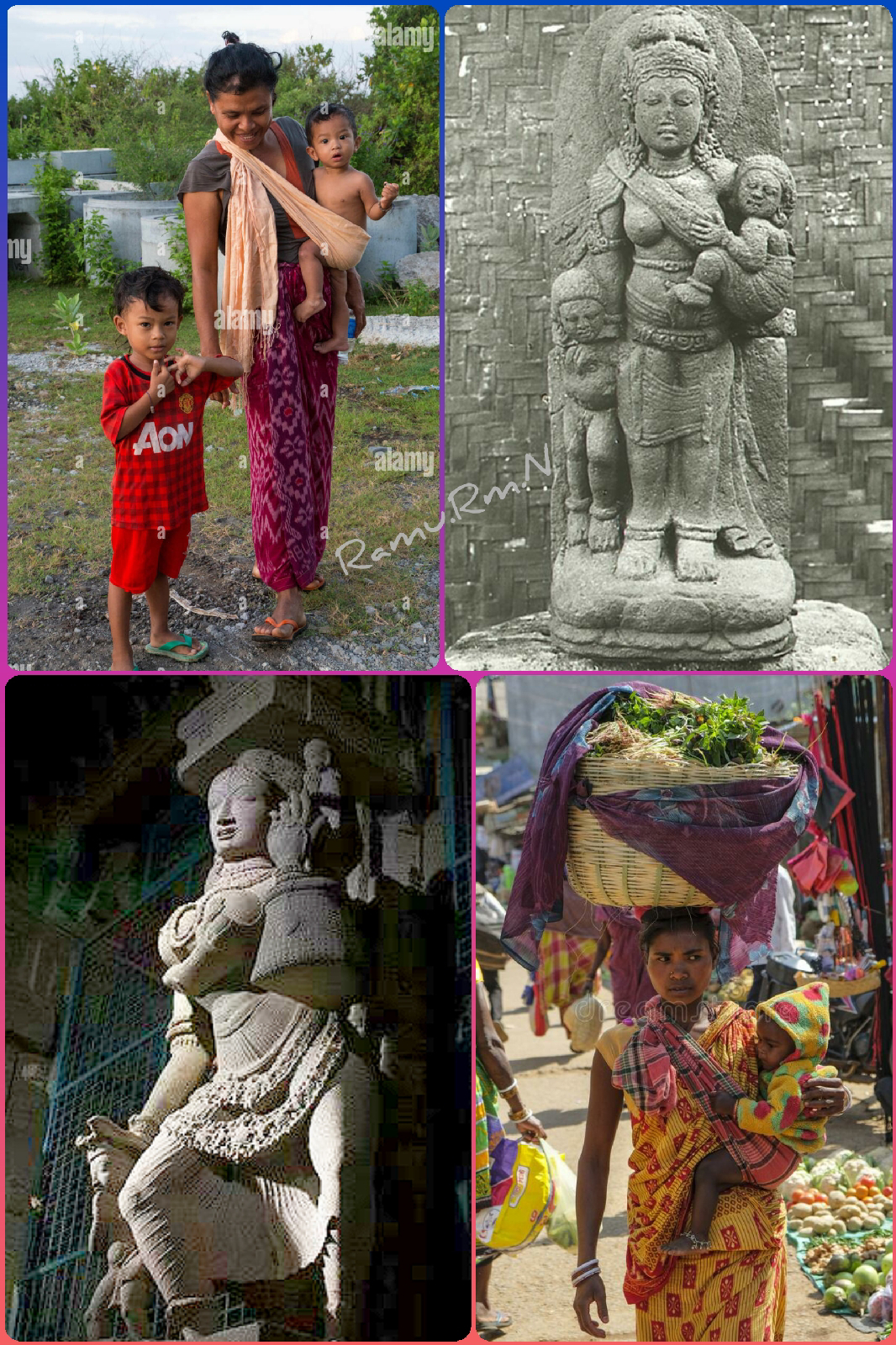Babywearing techniques include wrapping the child on the chest attaching them to the side of the body with slings that range from traditional, colorful fabrics passed down through generations to generation. According to the region the way of carrying may vary like baskets, cradle boards, cloths and in certain regions carrying them on the back.
Here in this sculpture we could see a two armed Mother Goddess ( Brajut / hariti ) holding a elder one in his hand and carrying the Youngest in a Shoulder sling. This was 9 th century sculpture of the goddess Brajut / hariti from desa Claket_Jabung, #Indonesia is included here to show the way some traditional baby carriers are been used historically and this way of carrying exist in the rural parts of south Asian countries. Here in this collage we could see the simalar way of baby carried in the shoulder sling made of fabric which were from India and Bali, Indonesia. The #Balinese Mother and Children Carrying the Youngest in a Shoulder-sling and holding the elder one in his hand.
In the other half we could see the similar sculpture from #Madurai meenakshi Amman temple in south TamilNadu, India. This sculpture was made during nayaka period in this we could the mother with her three childern. She hold her elder one in his hand carries her younger one in her shoulder and she carries the other in her shoulder which looks like the Indonesian women ( hariti ) sculpture however the way of carrying the children was almost similar. In the other side we could see a recent picture of tribal woman from the #Kondh_tribe with her child in a sling shopping vegetables in the Koraput market in #Odisha, India.
The mythology of #Hariti is Buddhist in origin and dates back to Gandhara period (3rd century of the common era). The concept was popular in Northwestern India and the adjacent areas of Pakistan and #Afghanistan. The spread of the concept/mythology and the fact the story and form have remained unchanged for such a long time worshipped as the protector of children.
Hariti married to #Yaksha Panchika lived in Rajagriha with her five hundred children. But she used to eat other children in Rajagriha. When Buddha was informed of what is happening he hid one of Hariti’s children. When distraught Hariti met Buddha and she narrated her story of her missing child.#Buddha pointed it out if missing one of five hundred children can cause so much mental agony what would be the case of mothers who lost her only child. With that Hariti realized her mistake and wanted to be the protector of children, easy delivery and happy child rearing, while her negative aspects include the belief of her terror towards irresponsible parents and unruly children.
--Ramu.Rm.N





No comments:
Post a Comment